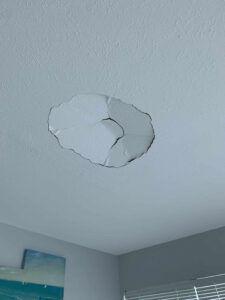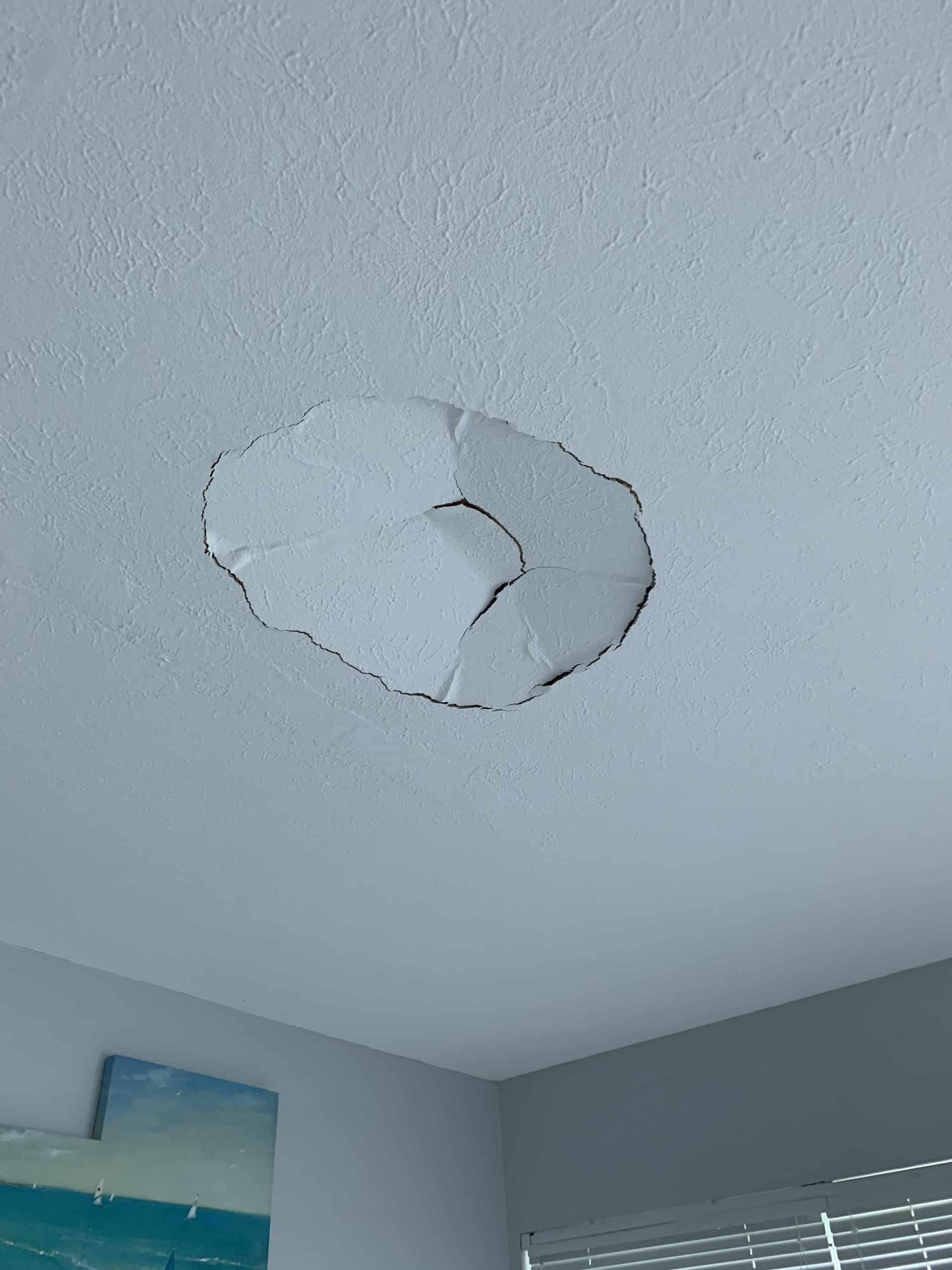Drywall Repair Las Vegas is more manageable than most homeowners realize, especially for small dents and holes. In fact, many DIYers can tackle such jobs with a little patience and the right tools.

Small nail and screw holes can be filled with a bit of spackling paste or joint compound, spread using a drywall putty knife (not the kind of utility knife you’d use for wood putty). Smooth the patch until it’s flush with the wall and sand it down.
If your drywall damage is limited to small holes or dents, you may be able to simply touch them up with some spackling compound and touch-up paint. This is especially true if the hole isn’t very deep. You can also try using a pre-cut patch kit that includes screens that are designed to stick over holes in the wall. These are great for door knob holes and will cover the damaged area without requiring much more spackling or patching.
Before attempting to fix a ding or hole in your drywall, it’s important to determine whether it is caused by a nail or screw that has popped out of the wall or by water damage. Once you have done this, you can use the drywall knife to carefully dig out any nails or screws. If you have a lot of damage in one area, it may be necessary to repaint the entire wall. If this is the case, be sure to choose paint that matches the original color of your drywall so that any patched areas will blend in with the rest of the wall.
To repair a small hole or ding, first lightly sand the surrounding surface. This will help improve the adhesion of the spackling. Next, cut a piece of paper joint tape to the size of the hole and press it in place, smoothing it down with the drywall knife. Finally, apply a thin coat of spackling to the surface and smooth it down, allowing the joint tape to be covered with the spackling.
Small holes that aren’t near electrical outlets or conduits can be repaired by securing them with a corner bead or by replacing the entire section of drywall. However, it is essential to hire a professional if you need to replace the entire section of wall.
Large holes can be difficult to repair. Depending on the location of the hole, you may need to install furring strips or a corner bead, and possibly even electrical work, before you can fill it in and retape. It is important to check with a professional before attempting to fix these types of large holes, as they can be complicated and expensive to fix.
Large holes and cracks
Large holes and cracks in drywall can be more complicated to repair than small dents. In many cases, the drywall needs to be replaced, not just patched. This process requires more construction and is best left to professionals.
When repairing large holes and cracks, begin by widening the crack with a utility knife or drywall saw. Then, use a putty knife to apply a layer of drywall compound over the area. Use a second coat and smooth the compound with the putty knife, feathering the edges so that the repairs blend in with the wall. Continue the process until the area is level, then sand lightly with 100-grit sandpaper to remove any ridges and smooth the surface of the repair. Finally, prime and paint.
If the crack extends to a corner, first widen it using a utility knife or drywall saw to prevent the edge from pulling away from the wall. Next, cut out a square of drywall larger than the damaged section and screw it in place over the existing drywall, being careful not to hit any electrical or utility wires. Ensure that the replacement drywall is screwed to both the stud and the stud clips.
If a nail pops up and shows through the drywall, counter-sink it by driving two screws into the stud on either side of the nail hole (Image 1). This will help keep the nail from pushing back through the drywall again.
Cracks that occur in the corners of a sheet are often caused by the wall shifting or by water leakage. To fix this type of damage, use a utility knife to cut through the drywall at the top and bottom of the crack, then install a new piece of drywall with joint tape on the seams. This will strengthen the corners, reduce future shifts, and minimize cracking (Image 2).
Loose tape is another common problem that can cause problems with a drywall installation. If a section of the tape is loose, use a utility knife to cut through a length of the paper covering and expose the drywall core underneath (Image 1). Then, pull up the tape, remove the loose sections of the old joint compound with a scraper or razor blade, and smooth the area with a putty knife.
Loose Tape
Loose tape is a common drywall problem that can be very noticeable. This issue usually results from the improper installation of drywall tape or joint compound during construction. When this occurs, the tape begins to loosen from the drywall surface and eventually falls off. It’s important to address this issue as soon as it happens in order to avoid peeling and other problems.
To fix this problem, cut away the loose section of tape with a utility knife until it is solidly attached to the ceiling. Don’t try to putty the loose tape in place, as this will only make it worse. Instead, remove the loose tape and re-tape the seam with self-adhesive mesh drywall tape. Be sure to leave a 1-inch gap between the new tape and the end of the existing tape.
Once you have the loose tape removed, use a drywall taping knife to spread a thin layer of drywall mud over the exposed area. Be sure to press the mud down onto the tape to ensure it adheres properly. Once the mud is dry, install the new strip of tape over it and squeeze out any air bubbles.
After the new tape is installed, sand the drywall seam using 120-grit sandpaper. This will smooth the area and help it blend in with the surrounding drywall.
Once you’ve sanded the patch, apply 2-3 more coats of drywall joint compound. Be sure to sand between each coat and allow it to dry completely before applying another. We recommend using a 20-minute setting compound for this step, as it hardens quickly and won’t shrink once it dries. Be sure to wear a dust mask and safety goggles while working on your drywall repair, as the compound will create a lot of dust. Also, be sure to check for electrical wiring before starting any work on a ceiling to avoid electrocution or fires. If possible, hire a professional to do the drywall repairs for you. However, if you decide to do the work yourself, be sure to use a high-quality drywall tape like our TapeBuddy or Bazooka drywall taping tool to ensure a proper application of the compound.
Mold
Drywall is an ideal building material because it’s inexpensive, quick to put up, and can take a lot of abuse. Unfortunately, it’s also prone to mold growth. Mold is a fungus that thrives in warm, moist environments. It feeds on drywall paper and, when it spreads, can cause extensive damage to walls. Mold can be a real health hazard, too, especially for people with asthma or lung conditions.
If you suspect your drywall has mold, it’s important to act quickly. Start by shutting off the power to any suspected areas at the circuit breaker panel. You should also shut off water lines that run through the affected wall. Then use a stud finder to locate the positions of wall studs and remove any soft, moldy drywall. Place the drywall in large contractor’s bags for disposal. Be sure to check for signs of mold on the back side of the drywall, too.
Once the area is cleared, you can repair the drywall. Measure the space where the drywall was removed and cut a new piece of drywall to size. Make sure to add extra length and width for a snug fit. When the patch is dry, apply joint compound and smooth it with a drywall knife. Sand it lightly to create a crisp edge, then prime and paint.
Mold in drywall can be hard to prevent because it’s almost impossible to completely seal an entire wall. However, you can prevent future problems by limiting the amount of humidity in your home. Using dehumidifiers in high-moisture areas like bathrooms, basements, laundry rooms, and kitchens will help to keep drywall and insulation dry and mold-free.
While repairing drywall can often get rid of problems like small holes and dents, moldy drywall is usually better replaced. Replacing it will ensure that you’re not introducing mold to other parts of your home and potentially harming the health of your family. Mold spores can become airborne and travel to other rooms in your home, leading to serious health issues. By replacing the moldy drywall, you can protect your family’s health and save money in the long run.
